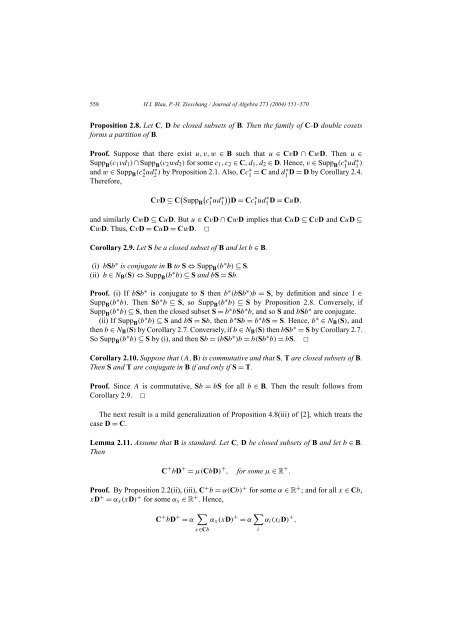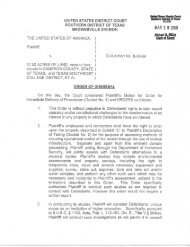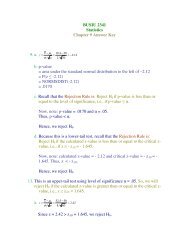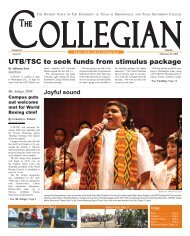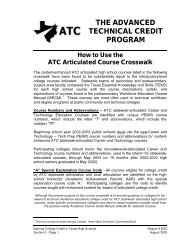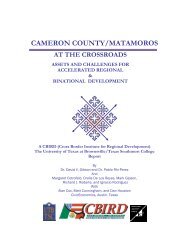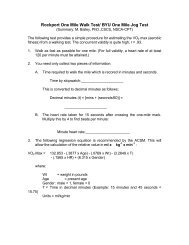Sylow theory for table algebras, fusion rule algebras, and ... - blue
Sylow theory for table algebras, fusion rule algebras, and ... - blue
Sylow theory for table algebras, fusion rule algebras, and ... - blue
You also want an ePaper? Increase the reach of your titles
YUMPU automatically turns print PDFs into web optimized ePapers that Google loves.
558 H.I. Blau, P.-H. Zieschang / Journal of Algebra 273 (2004) 551–570<br />
Proposition 2.8. Let C, D be closed subsets of B. Then the family of C-D double cosets<br />
<strong>for</strong>ms a partition of B.<br />
Proof. Suppose that there exist u, v, w ∈ B such that u ∈ CvD ∩ CwD. Then u ∈<br />
SuppB (c1vd1) ∩ SuppB (c2wd2) <strong>for</strong> some c1,c2 ∈ C, d1,d2 ∈ D. Hence, v ∈ SuppB (c∗ 1ud∗ 1 )<br />
<strong>and</strong> w ∈ SuppB (c∗ 2ud∗ 2 ) by Proposition 2.1. Also, Cc∗ 1 = C <strong>and</strong> d∗ 1 D = D by Corollary 2.4.<br />
There<strong>for</strong>e,<br />
CvD ⊆ C ∗<br />
SuppB c1ud ∗ ∗<br />
1 D = Cc1ud ∗ 1 D = CuD,<br />
<strong>and</strong> similarly CwD ⊆ CuD. Butu ∈ CvD ∩ CwD implies that CuD ⊆ CvD <strong>and</strong> CuD ⊆<br />
CwD. Thus, CvD = CuD = CwD. ✷<br />
Corollary 2.9. Let S be a closed subset of B <strong>and</strong> let b ∈ B.<br />
(i) bSb ∗ is conjugate in B to S ⇔ Supp B (b ∗ b) ⊆ S.<br />
(ii) b ∈ NB(S) ⇔ Supp B (b ∗ b) ⊆ S <strong>and</strong> bS = Sb.<br />
Proof. (i) If bSb ∗ is conjugate to S then b ∗ (bSb ∗ )b = S, by definition <strong>and</strong> since 1 ∈<br />
Supp B (b ∗ b). ThenSb ∗ b ⊆ S, so Supp B (b ∗ b) ⊆ S by Proposition 2.8. Conversely, if<br />
Supp B (b ∗ b) ⊆ S, then the closed subset S = b ∗ bSb ∗ b,<strong>and</strong>soS <strong>and</strong> bSb ∗ are conjugate.<br />
(ii) If Supp B (b ∗ b) ⊆ S <strong>and</strong> bS = Sb, thenb ∗ Sb = b ∗ bS = S. Hence, b ∗ ∈ NB(S), <strong>and</strong><br />
then b ∈ NB(S) by Corollary 2.7. Conversely, if b ∈ NB(S) then bSb ∗ = S by Corollary 2.7.<br />
So Supp B (b ∗ b) ⊆ S by (i), <strong>and</strong> then Sb = (bSb ∗ )b = b(Sb ∗ b) = bS. ✷<br />
Corollary 2.10. Suppose that (A, B) is commutative <strong>and</strong> that S, T are closed subsets of B.<br />
Then S <strong>and</strong> T are conjugate in B if <strong>and</strong> only if S = T.<br />
Proof. Since A is commutative, Sb = bS <strong>for</strong> all b ∈ B. Then the result follows from<br />
Corollary 2.9. ✷<br />
The next result is a mild generalization of Proposition 4.8(iii) of [2], which treats the<br />
case D = C.<br />
Lemma 2.11. Assume that B is st<strong>and</strong>ard. Let C, D be closed subsets of B <strong>and</strong> let b ∈ B.<br />
Then<br />
C + bD + = µ(CbD) + , <strong>for</strong> some µ ∈ R + .<br />
Proof. By Proposition 2.2(ii), (iii), C + b = α(Cb) + <strong>for</strong> some α ∈ R + ;<strong>and</strong><strong>for</strong>allx∈Cb, xD + = αx(xD) + <strong>for</strong> some αx ∈ R + . Hence,<br />
C + bD + = α <br />
αx(xD) + = α <br />
αi(xiD) + ,<br />
x∈Cb<br />
i


